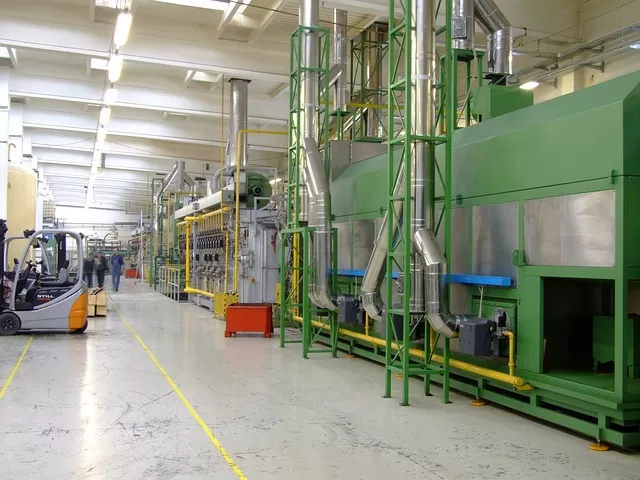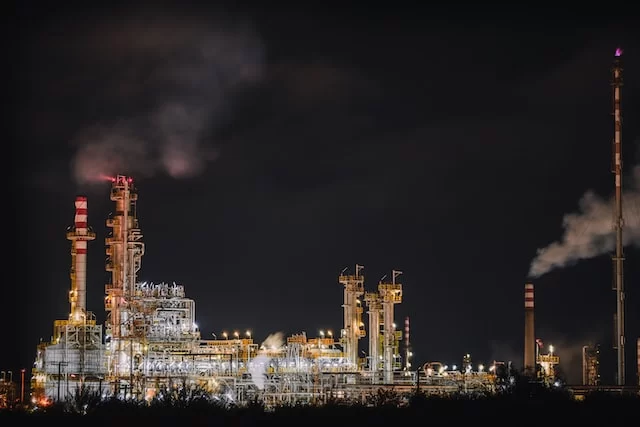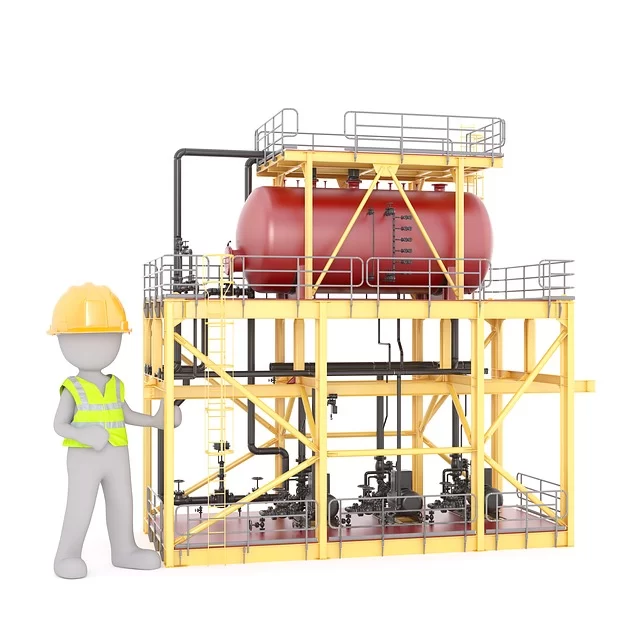What Exactly Is The Role Of A Maintenance Planner?
A maintenance planner is essential to the seamless operation of any organisation. They put together all of the pertinent data for maintenance tasks and arrange it in a format that complies with site requirements or standards.
The scheduler uses this data to create a work schedule, and the maintenance execution team uses it to make sure that all planned work is completed completely, on time, safely, effectively, and efficiently.
The quality of the work order planning done up front is crucial to this process because without it, the schedule and the quality of the maintenance performed will suffer.
Breaking Down Work Orders for Safe and Efficient Execution.
Breaking down work orders into smaller, safer-to-complete tasks is one of a maintenance planner’s main duties.
To ensure that each step advances the maintenance process as a whole, these tasks are arranged logically.
By breaking down work orders into logical steps and in a logical sequence, a maintenance planner enables the execution team to accomplish their tasks safely and effectively.
Ensuring Accurate Durations and Identifying Trade Types.
To guarantee that every maintenance task has a precise start and finish time, a maintenance planner is a necessity.
The planner helps with efficient scheduling and resource allocation by precisely projecting the amount of time needed for each task.
In addition, the planner specifies the kinds of trades needed to finish the job and makes sure each trade has enough time to finish their tasks quickly and safely.
Processing Work Requests for Defect Rectification.
In order to address any known mechanical, electrical, or structural problems or issues, a maintenance planner processes work requests for defect rectification or corrective maintenance.
The planner is tasked with making sure that identified problems are handled properly before they worsen and create more disruptions.
By reacting to these requests in a timely, effective, and efficient manner, the maintenance planner helps ensure that your organization’s production targets are maintained.
Identifying and Allocating Resource Requirements To Work Orders.
Determining and allocating all of the resources needed for every maintenance task is another crucial responsibility of a maintenance planner.
This entails determining and outlining on work orders all required components, materials, instruments, special tooling, and support equipment.
By making sure that all required resources are on hand, the planner makes sure that the execution team can work without interruptions or delays.
Extra Attention to Working At Heights & Material Handling Equipment.
Work orders requiring the use of working at heights equipment or lift and shift equipment will get extra attention from the Maintenance Planner.
Equally so is any work that requires the construction of scaffold or provision of specialty access platforms.
Careful consideration must be given to work that should or would involve the use of scaffolds, scissor lifts, elevated work platforms (EWPs), cranes, fork lifts, telescopic handlers, and earthmoving tyre handlers.
The planner guarantees the safe and effective completion of these tasks by providing additional planning effort and coordination.
What does Maintenance Planning Look Like at Industrial Businesses?
The duties of a maintenance planner encompass a broad spectrum of activities necessary for the seamless operation of any organisation.
A maintenance planner gathers data, dissects work orders, verifies durations, processes work requests, and assigns resources in order to maintain the overall effectiveness and safety of maintenance operations.
In industries like mining, refining, manufacturing, smelting, and others, a maintenance planner is crucial to the smooth operation and effective maintenance procedures.
Determining “what needs to be done” and “how it should be done” to maintain machinery, facilities, and equipment in optimal working order is the responsibility of a maintenance planner.
An integral part of the maintenance process is a maintenance planner. A work request is created by a user of a computerised maintenance management system (CMMS) when they determine that corrective maintenance is necessary.
After finding this information, the maintenance planner ascertains whether a work order already exists for the task at hand.
If not, the planner plans the work according to a specification and turns the request into a work order.
The Importance of Maintenance Planning.
I think that only when excellent maintenance planning is incorporated into the whole maintenance process can top-notch asset management be accomplished.
Maintenance tasks must be completed in an organised and methodical manner in order for effective maintenance planning to take place.
The repair of a malfunctioning piece of equipment needs to be well-planned and executed according to a work planning specification that sets a high standard for quality and gives the maintenance execution team all the tools they need to finish the job completely, on schedule, and within budget.
Organisations that thoroughly plan maintenance jobs before assigning labour can minimise unavailability, maximise resources, minimise rework, and potentially prolong the lifespan of their precious assets.
Maintenance Planning vs. Maintenance Scheduling.
It’s crucial to remember that maintenance scheduling and maintenance planning are two different jobs; the maintenance planner handles the “what” and “the how” of work orders. “The Who” and “The When” are the responsibilities of the maintenance or work scheduler.
Some businesses might combine them under the planner/scheduler position. Nevertheless, I think it frequently leads to rushed work schedules and takes important time away from the planning process.
Professionals who are committed to scheduling maintenance work can offer substantial advantages, and you will likely refrain from combining the two positions once you realise how important a good scheduler can be.
The Advantages of Quality Maintenance Planning.
When quality maintenance planning is carried out, companies can experience a range of benefits as follows:
1. Better use and allocation of resources. By only scheduling fully planned maintenance tasks, companies are making sure that the required tools, equipment, and materials are available when needed and they can decrease downtime and increase efficiency.
2. Maintenance planning quality helps maximise the use of core maintenance crew labour.
a. When the scheduler knows that every fully planned work order has captured all resources required, they can optimise resources for the execution period when work orders are completely planned.
b. With a well-defined schedule supported by fully planned work orders in place, maintenance technicians can efficiently manage their time, prioritise tasks, and cut down on idle time.
c. The business benefits from higher productivity and lower expenses as a result.
3. Better departmental and stakeholder coordination results from effective maintenance planning.
a. By giving thorough timetables and schedules and making sure that everyone is in agreement and working towards the same objectives, planners promote cooperation and communication.
Duties and Responsibilities of Maintenance Schedulers and Planners.
Maintenance schedulers and planners have distinct but complementary roles.
A maintenance planner determines the scope of work, creates work orders, and ensures that all necessary resources are available, whereas a maintenance scheduler assigns tasks to technicians, creates a schedule, and tracks schedule completion progress.
The maintenance planner’s duties may occasionally include conducting equipment inspections, which allows them to stay on top of what is going on with the site machinery.
A maintenance planner will analyse data to identify maintenance needs, estimate work order costs, and organise necessary parts and resources.
They will create detailed work orders and communicate with other departments to ensure that the defects identified on work requests are valid and fully capture what is wrong with the equipment before fully planning the work orders.
On the other hand, maintenance schedulers are responsible for creating a maintenance schedule based on the priorities/business needs set by the planner and other key stakeholders, assigning tasks to technicians, organising contract labour, hire equipment, monitoring progress, and adjusting the schedule as needed.
The Key Components of an Effective Maintenance Planning Process.
An effective maintenance planning process consists of several key components:
a) Provide maintenance planners with detailed role descriptions. These are essential for ensuring that maintenance planners understand their responsibilities and expectations. This helps them align their efforts with the company’s goals and maintain consistency in the planning process.
b) Provide maintenance planners with a high-quality CMMS solution to improve maintenance planning efficiency.
c) A CMMS provides a centralised platform for maintenance planners to manage work orders, track maintenance history, and generate reports. It simplifies the maintenance planning process, increases data accuracy, and improves overall efficiency.
d) Maintenance planners benefit greatly from detailed business process maps and guidance documentation provided by companies. Business process maps outline the step-by-step procedures and workflows involved in the maintenance planning process, ensuring that all tasks are completed in a logical and systematic order.
e) Create RACI matrixes (Responsible, Accountable, Consulted, and Informed) to clarify roles and responsibilities in maintenance. Potential bottlenecks and confusion can be avoided by clearly defining who is in charge of each task and who must be consulted or informed. You want your maintenance planners to focus on their core business as much as possible, and RACIs will help them stay on track.
Reaching Your Full Potential as a Maintenance Planner.
Maintenance planners have to be knowledgeable about the tools, machinery, and procedures used in the industry in order to carry out their primary responsibilities in line with company standards.
They need to understand what has to be done, the skills needed to finish the task, and the proper way to do it.
It’s crucial to keep up with the newest technological advancements, maintenance best practices, and ongoing education.
In addition, proficient communication and teamwork skills with a broad spectrum of stakeholders, including technicians, engineers, schedulers, and management, are imperative for maintenance planners.
A maintenance planner must also be able to prioritise tasks, use time effectively, and adjust to changing conditions.
Having a strong combination of technical knowledge, organisational skills, and effective communication abilities is essential for success as a maintenance planner in a maintenance intensive industry.
Maintenance Planners will be around for a long time.
Thirty years ago, a maintenance planner was very uncommon. I’m happy to see how much the maintenance landscape has evolved over time and that, in the present day, most production-based businesses have at least one maintenance planner on staff.
Planning maintenance tasks thoroughly is becoming more and more crucial for companies whose production is dependent on maintenance.
These days, good maintenance planning is often seen as the foundation of successful operations because it provides several benefits that increase an organization’s overall profitability and productivity.
A major advantage of utilising a top-notch maintenance planner is increased equipment availability and uptime.
Companies make sure that maintenance tasks are fully planned ahead of scheduling and execution are making sure that equipment defects are getting properly resolved and in a timely manner.
This prevents a Level 1 problem from becoming a Level 6 problem the following month, and so on.
Quality maintenance planners ensure that equipment defects are corrected using work orders, which can then be effectively scheduled and resolved by the maintenance execution team.
This improves equipment uptime and availability by ensuring that critical assets do what your company expects them to do.
Reduce Unplanned Downtime and Costly Breakdowns.
Unexpected downtime can result in large production losses and expensive repairs. Comprehensive maintenance planning lowers the likelihood of unplanned equipment malfunctions, breakdowns, and reoccurring issues that may not have been adequately handled the first time.
Operations will nearly always run more smoothly when quality maintenance planning is implemented.
If defects and issues are properly addressed, thoroughly planned, and the foundation for a successful maintenance execution team is established, businesses can drastically reduce unplanned downtime, improve safety, and control maintenance costs.
Maintenance Crew Resource Allocation and Utilization.
Proper prior planning prevents poor maintenance team performance and ensures efficient use of resources such as labour, spare parts, and tools.
It helps ensure that resources and skills are allocated to the right tasks. As a result, waste is decreased and overall productivity is raised.
Companies that use quality scheduling procedures and efficient maintenance planning can maximise their resource allocation. This guarantees that the resources are available when needed and at the appropriate location.
Maintenance Planning Improves Safety for Personnel and Equipment.
By identifying any potential risks related to completing the scope of work, making sure that all necessary precautions are taken, and documenting all necessary information on the work order to ensure the work is completed safely and effectively, a fully planned maintenance task lowers safety risks.
This safeguards the important assets as well as the staff. Companies that put safety first by ensuring that maintenance is planned and carried out efficiently make the workplace safer and reduce the risk of accidents and injuries.
Proper Planning Minimises Maintenance Costs.
When tradespeople attempt to complete scheduled maintenance work, effective maintenance planning minimises wasted effort.
When maintenance tasks are carried out smoothly, they are finished in the allotted amount of time, enabling the members of the maintenance team to proceed on schedule to the next task.
Maintainers are compelled to participate in what is essentially emergency maintenance planning when work is poorly planned. The task duration will increase along with the overall maintenance costs as they have to make up for the planning deficiencies, which may include making arrangements for the urgent transport of parts that were not identified on the work order.
Making sure maintenance planners have received the appropriate training and understand how to create a high-quality, thoroughly planned work order is far more economical.
Increased Productivity and Operational Effectiveness.
Quality Maintenance planning that is followed by well thought out maintenance schedules and thorough maintenance execution minimizes disruptions and allows production processes to operate efficiently.
Ensure Compliance with Regulatory & Statutory Requirements.
Well-planned maintenance operations assist organisations in adhering to legal obligations. Reputation is preserved and fines are avoided with compliance.
Businesses can make sure they operate within the bounds of the law by making sure that any regulatory requirements are taken into account when planning maintenance work.
Effective Inventory Management and Spare Parts Planning.
Accurately determining which spare parts are needed and when guarantees efficient maintenance execution and prevents overspending on downtime.
Quality Maintenance Planning quality keeps the wrong parts form being associated with scheduled maintenance tasks.
Planners that precisely identify the spare parts they need and efficiently handle inventory requests and direct purchases related to maintenance work can optimise their processes and prevent needless delays caused by a shortage of spare parts.
Good Planners Enable Accurate and Timely Maintenance Scheduling.
Maintenance tasks are scheduled more accurately when a package of fully planned work orders is assigned to the scheduler.
This ensures prompt execution and prevents conflicts. By developing a well-structured maintenance schedule that guarantees maintenance tasks are finished on time, in full, and to specification while also ensuring the efficient operation of their equipment and processes, businesses can avoid problems during the maintenance execution phase.
What does a Shutdown Maintenance Planner Do?
An expert in maintenance planning, a shutdown planner is in charge of arranging and coordinating all the jobs and materials needed for a production outage or shutdown event.
A shutdown planner, though similar to a standard maintenance planner, concentrates on the work that can only be done during these shutdown periods.
A shutdown planner’s main responsibility is to make sure that, during a production shutdown, all required maintenance, repairs, and upgrades are completed quickly and effectively.
Careful planning, coordinating, and communicating with multiple stakeholders—maintenance teams, production managers, suppliers, and contractors—are required for this.
Some of the key responsibilities of a shutdown planner.
i. Creating Shutdown Schedules: A shutdown planner is in charge of putting together comprehensive schedules that specify the order in which tasks are to be completed during the shutdown. This entails determining which tasks are essential, estimating how long each task will take, and allocating resources appropriately.
ii. Resource Coordination: Ensuring that all required resources, including labour, machinery, supplies, and spare parts, are accessible and distributed effectively is a critical component of shutdown planning. The shutdown planner collaborates closely with various departments to arrange for the delivery and acquisition of these resources.
iii. Managing Contractors: External contractors with specialised knowledge of particular maintenance or repair tasks are frequently called upon to assist during a shutdown event. The shutdown planner is in charge of choosing and overseeing these contractors, making sure they follow safety guidelines and finish their assigned work within the allotted time.
iv. Doing Risk Assessments: In order to identify potential hazards and create suitable mitigation strategies, a shutdown planner thoroughly evaluates risks prior to the shutdown. This entails determining any possible safety concerns, estimating how the shutdown will affect production schedules, and putting the appropriate safeguards in place to reduce interruptions.
v. Effective communication with stakeholders: This is critical for successful shutdown planning. The shutdown planner acts as a primary point of contact, keeping all parties involved, including production managers, maintenance crews, and project engineers, informed on a regular basis. This ensures that everyone is aware of the status, any changes, and any potential issues that may arise while the system is down.
The Importance of Shutdown Planning.
During a production outage, shutdown planning is essential to the efficient performance of maintenance and repair tasks.
Quality Shutdown Planning is crucial for the following reasons:
a) Reducing Downtime: A shutdown planner assists in reducing the length of the shutdown by meticulously organising and coordinating all necessary tasks. This lessens the effect on total productivity and profitability by enabling the production facility to resume operations as soon as possible.
b) Optimising Efficiency: Well-planned shutdowns guarantee that all upkeep and repairs are completed as quickly and efficiently as possible. The shutdown planner assists in optimising the workflow during the shutdown period by coordinating with contractors, allocating resources efficiently, and optimising the order of tasks.
c) Improving Safety: There might be more risks connected to maintenance tasks during a shutdown event. To safeguard the employees and the facility, a shutdown planner carries out in-depth risk assessments and puts the necessary safety precautions in place. This lessens the chance of mishaps, injuries, and equipment damage.
d) Cost Optimisation: By guaranteeing that all necessary maintenance tasks are finished within the allotted time and budget, proper shutdown planning aids in cost optimisation. The shutdown planner reduces extra costs by preventing delays, needless downtime, and rework.
e) Long-Term Asset Management: Thorough inspections and repairs are made possible by a well-planned shutdown, which increases the production facility’s overall longevity and dependability. The shutdown planner lessens the chance of unplanned malfunctions and helps extend the life of vital assets by resolving possible problems during the shutdown.
In summary, a good shutdown maintenance planner is essential to making sure that maintenance and repair tasks are carried out successfully during a production stoppage or shutdown. Through thorough planning, resource coordination, contractor management, risk assessments, and stakeholder communication, the shutdown planner helps reduce downtime, maximise productivity, improve safety, optimise expenses, and guarantee the production facility’s long-term dependability.
Shutdown Planner CMMS Actions:
1) Update Shutdown Work Order Header and Task/Operations Details: As a shutdown maintenance planner, one of your key functions is to update the shutdown work order header and task/operations details.
a. This involves ensuring that all relevant information is accurately recorded and maintained in the system.
b. When a shutdown event is scheduled, it is essential to have a clear understanding of the work that needs to be carried out. This includes updating the work order header with pertinent details such as the shutdown event date, duration, and any specific requirements or constraints.
c. In addition to the header information, you will also need to update the task/operations details for each work order. This includes identifying the specific tasks that need to be completed during the shutdown, assigning resources, estimating the duration for each task, and sequencing them appropriately.
d. By ensuring that the shutdown work order header and task/operations details are accurately updated, you are laying the foundation for a successful shutdown maintenance event.
2) Process Approved Work Requests into Fully Planned Work Orders: Another crucial function of a shutdown maintenance planner is to process approved work requests that can only be executed via an outage or shutdown event into fully planned work orders.
a. When maintenance work requests are submitted and approved, it is the shutdown planner’s responsibility to review them and determine if they can be completed during normal operations or if they require a shutdown event.
b. For those requests that fall into the latter category, you will need to convert them into fully planned work orders. This process involves assessing the scope of the work, identifying the necessary resources, estimating the required time and cost, and integrating the work into the overall shutdown plan.
c. By effectively processing these approved work requests, you are ensuring that all necessary maintenance tasks are included in the shutdown event and that they are properly planned and executed.
3) Review and Update Existing Shutdown Work Orders: In addition to processing approved work requests, a shutdown maintenance planner also needs to review existing work orders that have been coded as ‘shutdown required’ and update them to a fully planned status.
a. Work orders that have been previously identified as requiring a shutdown event may need to be reviewed and updated periodically.
b. This is necessary to ensure that the work order details are up to date, resources are allocated correctly, and any changes or modifications are incorporated into the overall shutdown plan.
c. By reviewing and updating existing shutdown work orders, you are maintaining the accuracy and relevance of the planned maintenance activities. This helps to minimize any potential disruptions or delays during the shutdown event.
4) Adhere to the Site Shutdown Work Order/Work Pack Build Process: As a shutdown maintenance planner, it is essential to adhere to the site shutdown work order/work pack build process.
a. This process outlines the specific steps and requirements for compiling the work order content according to company specifications.
b. The work order/work pack build process typically involves gathering all the necessary information, such as equipment details, maintenance procedures, safety requirements, and any specific instructions or guidelines.
c. This information is then compiled into a comprehensive work pack that provides all the necessary information for executing the maintenance tasks during the shutdown event.
d. By following the site shutdown work order/work pack build process, you ensure that all the required information is captured and communicated effectively. This helps to streamline the planning and execution of the shutdown maintenance event, resulting in improved efficiency and effectiveness.
Plan Maintenance Shutdown Events.
Shutdown maintenance planners are responsible for fully planning and scheduling outage/turnaround/shutdown events.
This entails creating the scopes of work, specifying the goal of any impending shutdown maintenance events, and gathering all shutdown work orders using the designated shutdown work pack build procedure.
Understanding the aims and goals clearly is crucial when organising a maintenance shutdown event. This could involve maintenance, upgrades, replacements, and inspections of the equipment.
You can make sure that the required tasks are found and incorporated into the overall plan by clearly defining the shutdown event’s purpose.
After the goal has been established, you must create the work scopes for every approved maintenance task.
This entails dividing the work into doable chunks, determining the resources needed, projecting the time and expense needed, and properly organising the tasks.
Lastly, using the designated shutdown work pack build process, all of the shutdown work orders must be assembled into an extensive work pack. This guarantees that the maintenance team has access to all the information they need during the shutdown event.
You can reduce downtime, maximise resource utilisation, and guarantee that all required maintenance tasks are carried out effectively and safely by properly planning maintenance shutdown events.
The Combined Maintenance Planning and Scheduling Role.

Planning and scheduling maintenance is a critical component of effective asset management. It is impossible to overestimate the importance of these endeavours, particularly in sectors like the oil and gas industry that significantly rely on intricate machinery and systems.
The methodical selection of maintenance tasks, schedules, and resources required to maintain assets in optimal operating condition is known as maintenance planning.
In the meantime, scheduling makes sure that these tasks are precisely assigned over predetermined periods of time in order to guarantee that maintenance activities are finished quickly and with the least amount of disturbance to operations.
For many reasons, it is essential that scheduling and planning be integrated. First, by guaranteeing that maintenance is carried out at the proper intervals, it prolongs the lifecycles of assets.
This proactive strategy helps to prolong the life of assets by seeing possible problems before they become expensive failures.
Second, cost effectiveness and efficient maintenance scheduling are closely associated. Businesses that carefully plan maintenance tasks and schedule them during periods of low operational impact can drastically reduce downtime and related costs.
Furthermore, computerised maintenance management system (CMMS) quality is enhanced by careful planning and scheduling. Accurate data inputs are necessary for CMMS platforms to produce insightful analysis and recommendations.
The data fed into these systems becomes more reliable when maintenance tasks are well-planned and scheduled, which improves decision-making and streamlines asset management.
To put it briefly, the robustness of the CMMS overall and operational efficiency are both enhanced by the integration of maintenance planning and scheduling.
Maintenance planning and scheduling are critical components of effective asset management. Their contribution to maximising asset lifecycles, ensuring cost-effectiveness, and improving CMMS quality emphasises their importance.
As industries evolve, the demand for sophisticated maintenance strategies will only grow, making planning and scheduling an essential component of asset management.
Core Responsibilities of Maintenance Planners and Schedulers.
To guarantee that an organization’s asset management is effective and dependable, planners and schedulers for maintenance are essential.
Their main duties cover a broad range of duties essential to the long-term upkeep and effective functioning of facilities and equipment.
Maintenance planners are primarily in charge of determining what needs to be maintained. This means finding possible issues early on to prevent expensive breakdowns through routine inspections and assessments.
Planners can develop thorough maintenance plans that are suited to the unique requirements of each asset by foreseeing these needs.
The goal of these tactics is to increase asset performance and uptime. They may include predictive, preventive, and corrective maintenance techniques.
After the maintenance strategies are defined, planners draft detailed maintenance plans.
These plans lay out exactly what needs to be done, how often it needs to be done, and what resources are required.
This include laying out the parameters of the project, projecting the amount of time and labour needed, and listing the equipment and supplies needed. Making sure that every maintenance task is well-structured, documented, and completed in a methodical manner is the aim.
In contrast, schedulers are interested in the time-related aspects of maintenance management.
They create detailed schedules for each maintenance task, ensuring that all jobs are completed on time and without disrupting normal business operations.
This usually necessitates the creation of a master schedule that includes maintenance tasks from various departments and facilities.
Schedulers must also assign resources. They must ensure that necessary personnel, equipment, and materials are available when needed.
To avoid delays or resource shortages, procurement, human resources, and other departments must work closely together.
Furthermore, schedulers help to facilitate communication and collaboration among various stakeholders.
They serve as the liaison between maintenance teams, operations, and management, ensuring that everyone is on the same page and aware of upcoming maintenance activities.
This coordination helps to reduce downtime and improve overall operational efficiency.
Effective asset management necessitates the duties of maintenance schedulers and planners.
They support businesses in preserving the performance and dependability of their assets by carefully organising and scheduling maintenance tasks, which eventually leads to long-term operational success.
The Value of Combined Planning and Scheduling in the Oil and Gas Industry.
The oil and gas industry is characterised by complex operations and a high-risk environment, making the integration of maintenance planning and scheduling critical.
Because of the unique challenges this industry faces, maintenance must be performed with extreme caution in order to reduce costly downtime, improve safety, and maintain regulatory compliance.
Planning and scheduling are critical to achieving these objectives because they enable a proactive rather than reactive maintenance strategy.
Preventing unscheduled downtime is one of the primary benefits of integrated maintenance planning and scheduling in the oil and gas industry.
Businesses can reduce downtime by strategically aligning maintenance activities with operational demands.
For instance, planned maintenance carried out during designated shutdowns can avert unplanned malfunctions, which frequently cause large financial losses and delays in operations.
Furthermore, two of the most important issues facing the oil and gas sector are worker safety and environmental preservation.
By ensuring that maintenance is carried out methodically and that all equipment operates within safe bounds, integrated planning and scheduling help reduce safety risks.
Frequent maintenance and inspections can identify possible problems before they become serious, averting mishaps and environmental dangers. In addition to safeguarding employees, this proactive maintenance strategy helps businesses avoid the costly penalties and legal ramifications that come with breaking regulations.
Another area where combined planning and scheduling are beneficial is regulatory compliance.
Strict regulations governing the oil and gas sector require routine maintenance and safety inspections.
By guaranteeing that all legal and regulatory requirements are fulfilled on time, an integrated maintenance strategy helps to keep facilities operating continuously and legally while also avoiding fines.
To maximise asset management in the oil and gas sector, maintenance planning and scheduling must be integrated.
Businesses can attain operational excellence and maintain long-term profitability by minimising downtime, improving safety, and guaranteeing regulatory compliance.
Preventive and Predictive Maintenance Activities.
Predictive and preventive maintenance are essential to maintaining the longevity and effectiveness of equipment, so implementing them can lead to successful asset management.
Routine inspections and servicing are part of preventive maintenance, which aims to prolong the life of assets and avert possible malfunctions.
When creating thorough preventive maintenance plans, maintenance planners are essential in creating scheduled tasks like lubrication, adjustments, cleaning, and part replacements.
To reduce the chances of equipment failure, these tasks are carefully scheduled in accordance with industry standards, historical data, and manufacturer recommendations.
Conversely, predictive maintenance makes use of cutting-edge methods to anticipate possible equipment problems before they cause major disruptions to operations.
Maintenance teams can identify anomalies that point to wear and tear or imminent failures by using technologies like vibration analysis, thermography, and oil analysis.
By taking a proactive stance, planners can optimise resource allocation and equipment uptime by scheduling maintenance tasks based on the actual state of the equipment rather than on predetermined intervals.
Preventive and predictive maintenance techniques must be combined for efficient maintenance planning and scheduling.
To develop a balanced maintenance schedule, maintenance planners must examine data from a variety of sources, such as real-time monitoring systems, historical maintenance records, and equipment performance metrics.
This timetable ought to reduce downtime, efficiently distribute resources, and give priority to important assets.
Adopting a comprehensive maintenance plan improves asset performance overall and lowers the probability of unplanned equipment failures.
Organisations can increase the dependability and efficiency of their asset management procedures by combining predictive and preventive maintenance tasks.
The organization’s sustainability and profitability are ultimately enhanced by this proactive approach, which guarantees targeted and timely maintenance activities.
Condition-Based and Reliability-Centered Maintenance.
Reliability-Centered Maintenance (RCM) and Condition-Based Maintenance (CBM) are essential approaches in contemporary maintenance strategies that guarantee the longevity and best possible performance of assets.
CBM is a proactive strategy that keeps an eye on assets’ real state to assess when maintenance is necessary.
By anticipating possible problems, this approach helps to prolong the life of equipment and minimise unplanned downtime.
Through the use of a variety of monitoring instruments and technologies, including vibration analysis, oil analysis, and thermal imaging, CBM offers up-to-date information that guides maintenance tasks.
RCM, on the other hand, is an organised framework that ranks maintenance tasks according to the importance and dependability of the assets.
To create a customised maintenance schedule, it entails a detailed examination of the features and possible points of failure of the machinery.
RCM seeks to ensure effective resource allocation by striking a balance between maintenance costs and asset performance and reliability.
This approach raises asset dependability while simultaneously enhancing safety and regulatory compliance.
Asset management can be significantly enhanced by incorporating CBM and RCM into maintenance scheduling and planning.
Organisations can develop a comprehensive preventive and predictive maintenance strategy by utilising the strengths of both approaches.
Because of this integration, maintenance tasks can be scheduled more precisely, guaranteeing that they are completed at the best possible time, taking into account the operational priorities and asset conditions.
Using Computerised Maintenance Management Systems (CMMS) is essential to putting CBM and RCM into practice. A CMMS can gather and evaluate data from different monitoring instruments to offer useful information for maintenance choices.
Maintenance teams can effectively allocate resources, prioritise tasks, and make well-informed decisions thanks to this data-driven approach. Using CMMS improves operational efficiency, lowers maintenance costs, and increases asset reliability.
Including CBM and RCM in maintenance planning and scheduling helps the organisation achieve its overall strategic goals while also guaranteeing optimal asset performance.
Businesses can achieve a more efficient and sustainable maintenance management system by implementing these methodologies.
Optimizing Maintenance Workflows via CMMS.
Optimising maintenance workflows requires the quality use of a Computerised Maintenance Management System (CMMS).
An effective maintenance planner can use CMMS to optimise different types of maintenance tasks, increasing overall productivity.
Careful data entry is one of the main responsibilities since it is the foundation of good maintenance planning.
Making well-informed decisions is made easier with accurate data input, which guarantees that all asset information, maintenance schedules, and historical performance metrics are easily accessible.
Another crucial area where CMMS is essential is work order management.
The work order creation, scheduling, and tracking features of the system guarantee that maintenance tasks are completed on time.
This optimises resource allocation while reducing equipment downtime.
Maintenance planners prioritise work orders based on urgency, asset criticality, and resource availability, ensuring a balanced workload and avoiding bottlenecks.
Maintenance tracking via CMMS improves workflow efficiency. The system provides real-time updates and comprehensive reports on maintenance activities, allowing planners to track progress and identify areas that need improvement.
This continuous tracking aids in proactive maintenance planning, reducing the likelihood of unexpected equipment failures and extending asset life.
Furthermore, CMMS features such as automated notifications and reporting tools assist in streamlining communication and documentation processes.
Automated alerts notify maintenance personnel of upcoming tasks, while detailed reports provide insights into maintenance trends and performance metrics.
These features not only improve data accuracy, but also help to ensure compliance with industry standards and regulations.
The proper use of CMMS by skilled maintenance planners can significantly improve maintenance workflows. CMMS helps to improve data accuracy, streamline work order management, and facilitate maintenance tracking, resulting in more efficient maintenance processes and robust asset management.
Maximizing CMMS Usage for Maintenance Planning.
Effective use of computerised maintenance management systems (CMMS) is critical for efficient maintenance planning. To get the most out of CMMS, focus on proper configuration, comprehensive user training, and continuous improvement. A properly configured CMMS ensures accurate data entry, efficient scheduling, and timely completion of maintenance tasks.
Setting up a robust database with detailed information about all assets, maintenance history, and critical parameters is the first step in proper CMMS configuration.
This includes defining asset hierarchies, creating preventive maintenance schedules, and enabling automated task alerts.
Furthermore, connecting the CMMS to other enterprise systems, such as Enterprise Resource Planning (ERP), can improve data consistency and operational efficiency.
Another important aspect of CMMS optimisation is user training. Comprehensive training programs should be developed to educate maintenance personnel on the functionalities and best practices for using the CMMS.
This includes training in data entry, report generation, and analytics interpretation. Regular refresher courses can keep users up to date on new features and ensure that they use the system consistently.
Maintenance planners manage and analyse maintenance data in the CMMS. They track key performance indicators (KPIs) like mean time between failures (MTBF), mean time to repair (MTTR), and overall equipment effectiveness (OEE).
Planners can use these KPIs to identify trends, pinpoint inefficiencies, and devise strategies for improving maintenance procedures.
CMMS analytics are extremely useful for driving performance improvements. Advanced analytics tools within the CMMS can provide information about failure patterns, maintenance costs, and resource utilisation.
Using these insights, maintenance planners can make data-driven decisions, optimise maintenance schedules, and prioritise critical tasks.
Continuous improvement initiatives, guided by CMMS analytics, can result in increased asset reliability, lower downtime, and overall cost savings.
The Role of ERP Systems in Supporting Maintenance Planning.
Enterprise Resource Planning (ERP) systems play an important role in maintenance planning by providing a solid framework for managing various aspects of asset management.
The incorporation of ERP systems into maintenance operations significantly increases the efficiency of daily tasks.
These systems streamline the process by automating work orders, scheduling preventive maintenance, and ensuring that maintenance tasks are completed on time and accurately.
Another important feature of ERP systems is the management of spare parts inventory.
They provide real-time inventory tracking, allowing maintenance planners to maintain optimal stock levels while avoiding overstocking and stockouts.
This ensures that the necessary parts are readily available when required, reducing downtime and increasing productivity.
ERP systems also make it easier to communicate and collaborate. They act as a centralised repository for all maintenance-related information, allowing departments to access and share data seamlessly.
This improves coordination among maintenance teams, procurement, and inventory management, resulting in more informed decisions and better resource utilisation.
The accuracy of data is critical for effective maintenance planning, and ERP systems excel in this regard.
They minimise errors and discrepancies by centralising data collection and entry.
Accurate data allows maintenance planners to create more reliable maintenance schedules, predict potential problems, and take corrective action proactively.
ERP analytics and reporting capabilities provide significant advantages for maintenance planning.
Through comprehensive reports and dashboards, they offer insights that let planners keep an eye on key performance indicators (KPIs) and gauge how well maintenance efforts are working.
Reliability and efficiency of assets are maintained by planners being able to react quickly to any new problems thanks to real-time data access.
On the other hand, switching to an ERP system can be difficult. There may be a substantial time and resource commitment during the initial implementation phase.
Furthermore, in order to use ERP systems effectively, thorough training is required due to their complexity.
To fully utilise ERP systems and achieve the best maintenance results, it is imperative that maintenance planners and other pertinent staff receive the necessary training.








